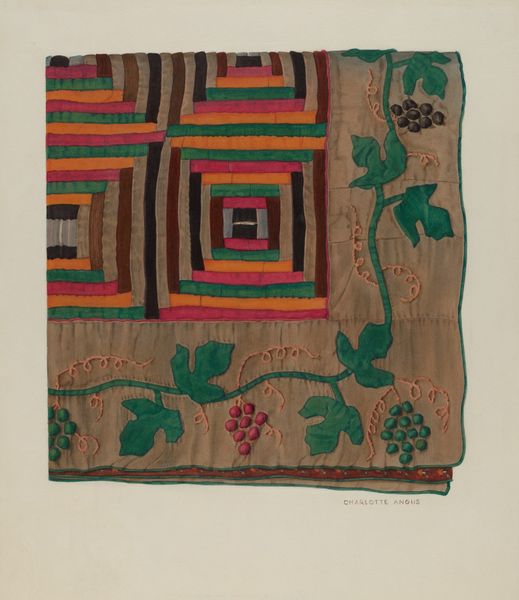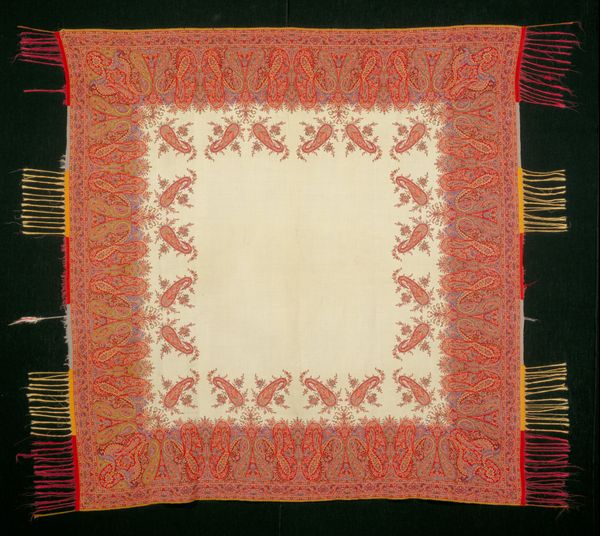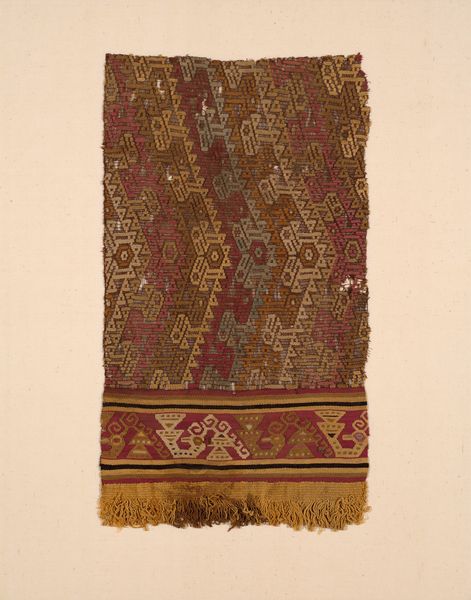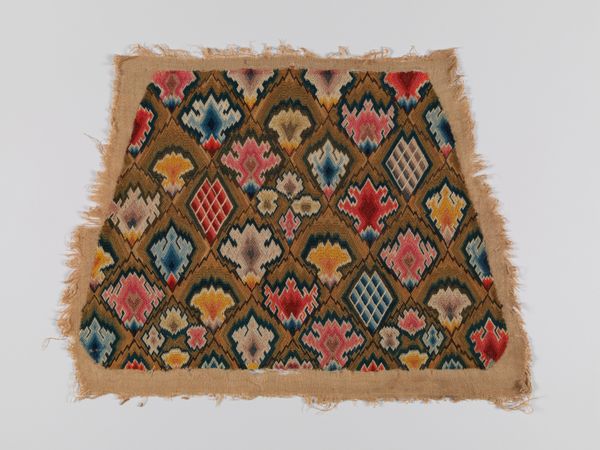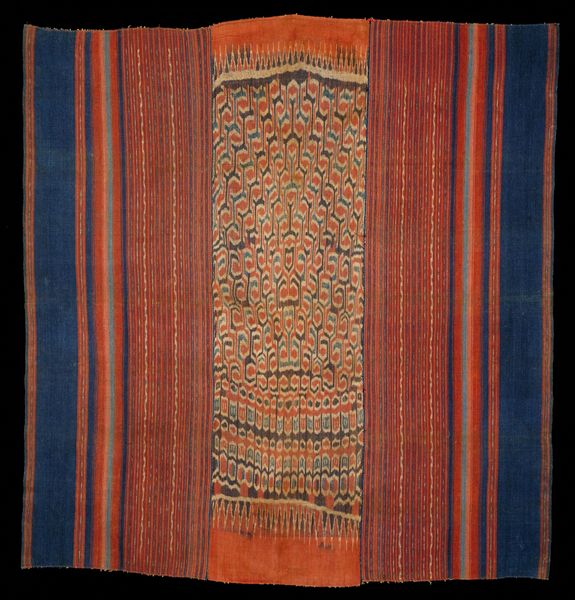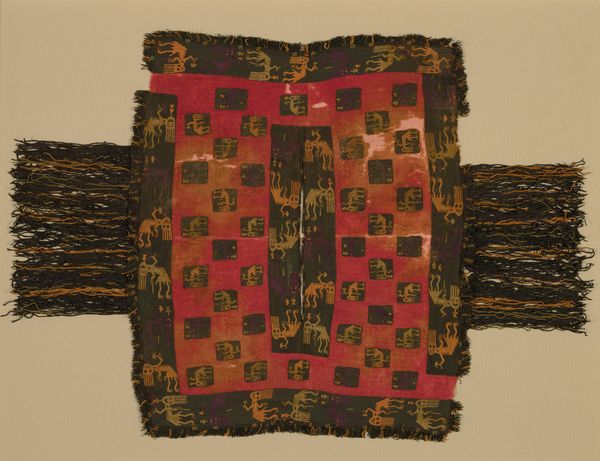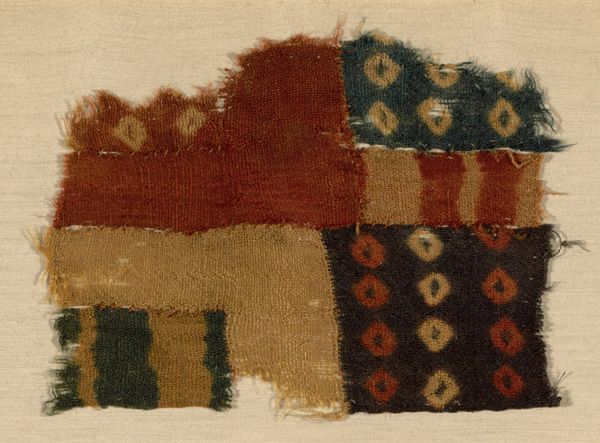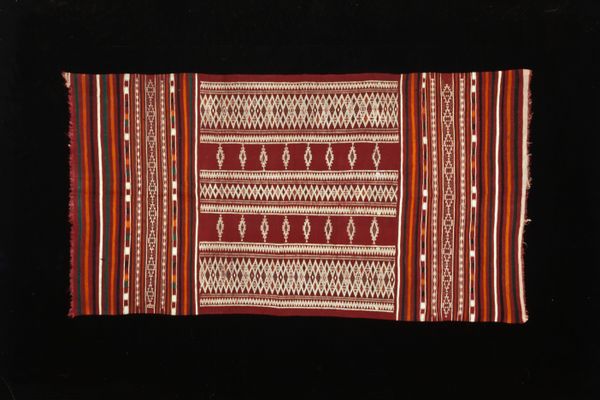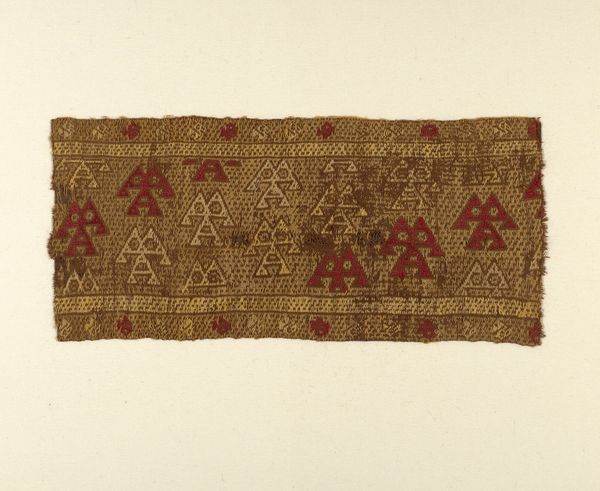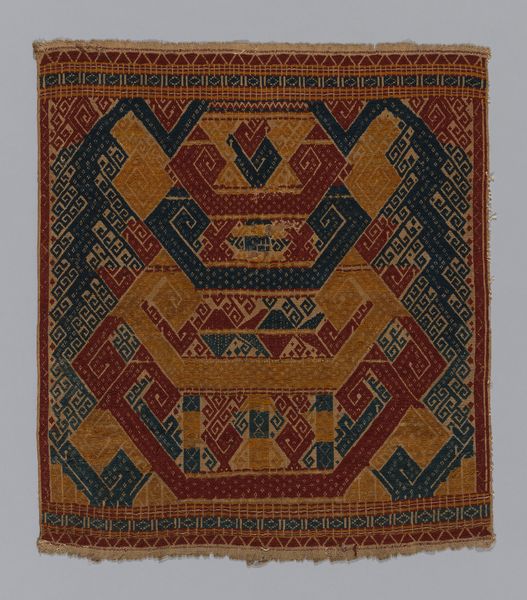
fibre-art, weaving, textile
#
fibre-art
#
weaving
#
textile
#
geometric
#
indigenous-americas
Dimensions: 32.7 × 24.5 cm (12 7/8 × 9 5/8 in.)
Copyright: Public Domain
Curator: This textile fragment, attributed to the Wari culture, possibly dating back to 800 to 1100, is currently housed here at The Art Institute of Chicago. Editor: Well, my first thought is: wow, look at that ochre fringe! It feels almost playfully theatrical against the weight of that brooding dark-brown fabric above. But I’m mostly drawn to how something so visually busy somehow manages to feel very restful. Curator: It's a compelling tension, isn’t it? We have this solid block of what seems like intentionally austere material paired with the lively geometric patterning in the weaving below, punctuated by that long, sweeping fringe. As a piece, it offers a window into the visual strategies used to project imperial power in the Andes. Textiles held immense cultural significance, didn't they? Editor: Absolutely. Imagine the artist's hands, meticulously working each thread! And that restricted color palette—dark browns, reds, creams, subtle blues— creates such a sophisticated harmony! I also love the way those geometric figures seem almost like glyphs in a lost language; I imagine they’re figurative but have become something abstract. Curator: Exactly. The geometric shapes and figures might represent deities, ancestors, or important narratives. The Wari state used such works to consolidate authority; gifting them to local leaders in an effort to communicate with potential vassals to cement allegiances. The fragment would have circulated as a crucial element of elite display. Editor: It's powerful how something created to project strength can whisper so much to us now across time. When you look closer, those rigidly controlled forms hint at so much: trade, craft traditions, symbolic power structures...It becomes almost like an entire social world compacted into the weave. I see a meditation. Curator: It truly becomes a relic with far-reaching effects and consequences when observed in its appropriate setting. A society’s politics made visible through warp and weft. Editor: Absolutely, textiles weren't "just" art. In these societies, their practical, historical and social significance elevate textiles to so much more. It makes me wonder what stories this particular Fragment holds beyond what we immediately perceive. Curator: It is that depth of intertwined meaning which helps preserve these pieces through the ages, giving them lasting importance in a contemporary context. Editor: A beautiful, yet imposing puzzle—one which reveals more of its beauty the closer you look.
Comments
No comments
Be the first to comment and join the conversation on the ultimate creative platform.

